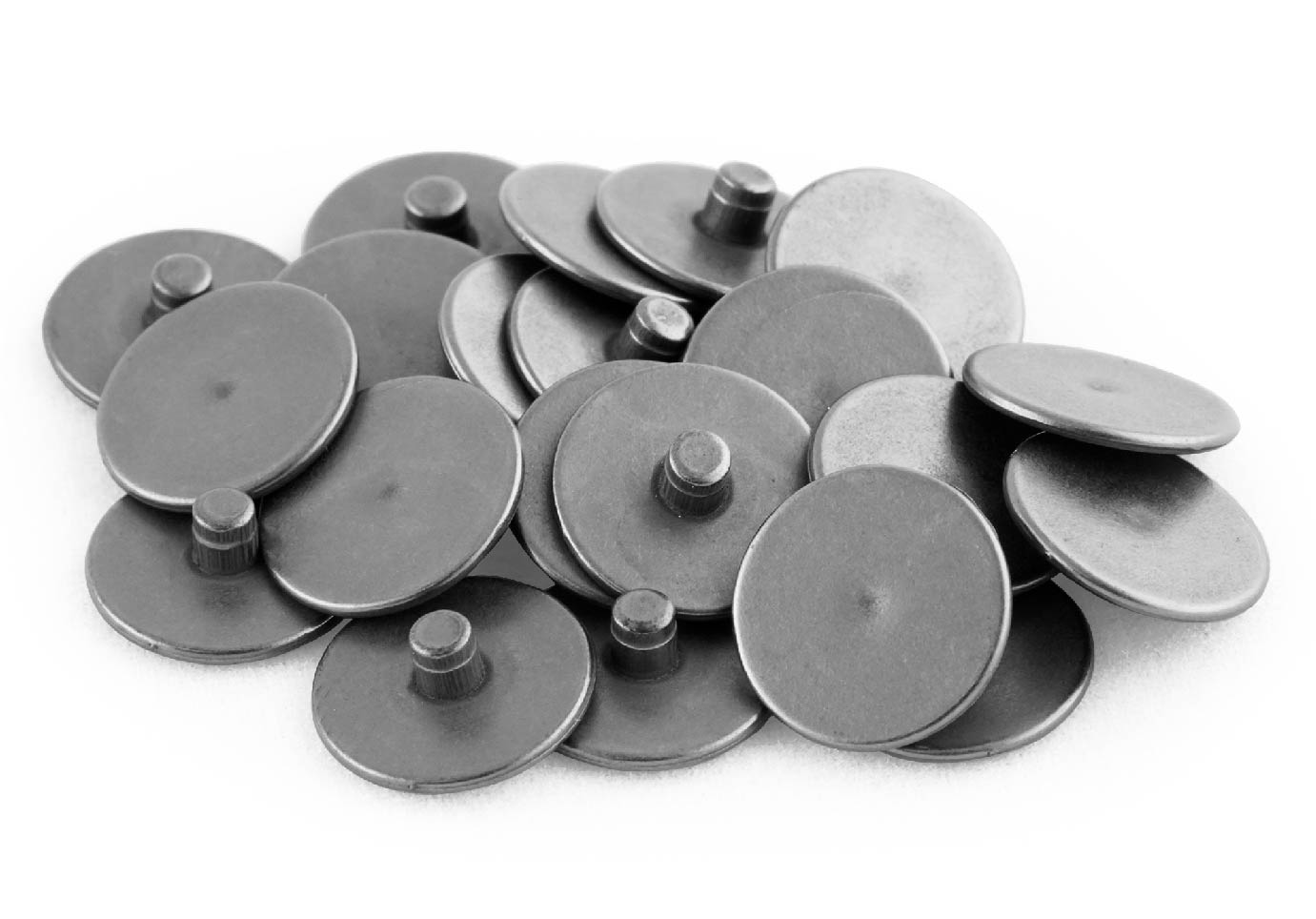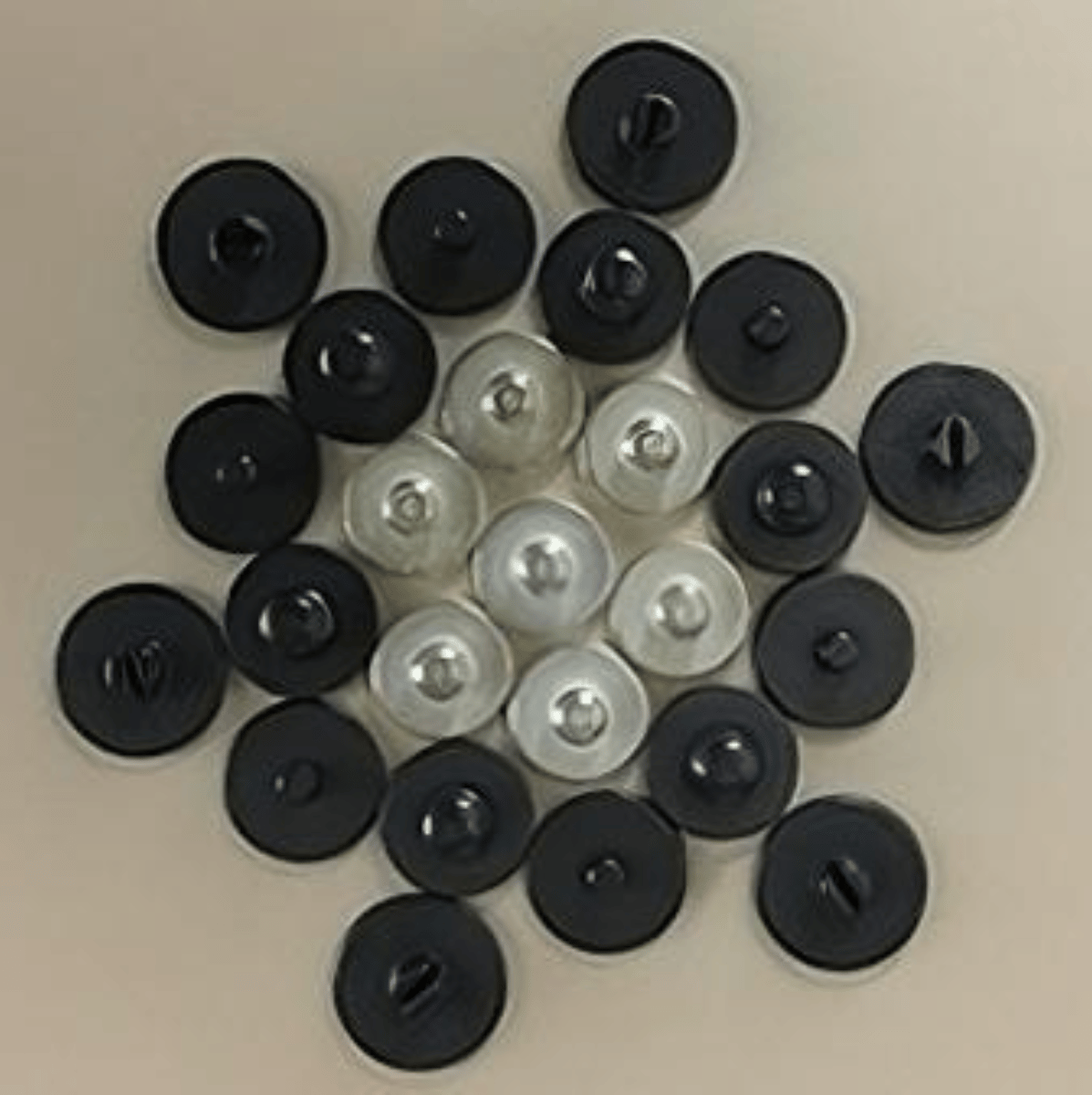Sensors
Whether it is a fiberglass reinforced or conductive carbon filled resin, Micron sensors are recognized for their unsurpassed performance in biomedical monitoring and diagnostic applications.
Whether it is a fiberglass reinforced or conductive carbon filled resin, Micron sensors are recognized for their unsurpassed performance in biomedical monitoring and diagnostic applications.
We are the world’s largest manufacturer of silver and silver chloride sensors for electrodes. Micron meets or exceeds all AAMI, industry standards, and customer specifications. We use the finest materials and rigorously controlled processes to ensure a defect-free product.
Our MicroSense™ sensors set the quality standard that other companies only strive to achieve. By using innovative and proprietary manufacturing methods, our products are manufactured to meet the needs of virtually all disposable electrode manufacturers. Our sensor elements can be supplied with silver or silver/silver chloride coatings from 65 microinches to over 100 microinches using our unique process that guarantees durability and superior electrical performance.
If one of our standard lines of sensor elements does not meet your particular application, Micron has the resources and expertise to manufacture a product specifically suited for you. With our experienced sensors team and their extensive capabilities, we can provide large and small volumes of sensors at a price to performance ratio that our competitors cannot match.


MicroSense Gemini Series
These sensors – used primarily in heart monitoring and bioinstrumentation electrodes – feature a silver or silver chloride coating over a molded plastic substrate. They are available in various silver thicknesses over either a fiberglass reinforced or conductive carbon filled resin substrate. The most popular configuration is 85 microinches of silver/silver chloride over a fiberglass reinforced plastic substrate. Several dimensional styles and configurations are available; all of which mate with either a stainless steel or nickel-plated brass top snap that accepts industry standard parallel spring or clip type lead wires.
MicroSense Agility Series
These sensors are a single unit and designed to accept industry standard snap (parallel spring) or clip lead wires. Available with either a glass or carbon filled substrate, one-piece sensors are supplied with a silver/silver chloride coating thickness ranging from 65 to 100 microinches.
MicroSense Performance RT Series
Micron provides disposable radiotranslucent electrode sensors that permit radiological, magnetic resonance, and other imaging examinations without electrode removal and/or replacement. The sensor elements can be silver/silver chloride coated to a specific thickness and are also available as uncoated conductive carbon fiber for other biomedical applications.
Micron offers additional two-piece conductive components configurations for radiolucent applications and has the engineering expertise to design and develop custom components to meet our customer needs.
MicroSense Profile Series
Micron offers sensors for pre-wired neo-natal applications. Micron also offers additional pre-wired sensor configurations and has the engineering expertise to help design and develop custom pre-wired sensors for standard and radiolucent applications to meet our customer needs.
Below are some frequently asked questions about our sensors. If you have any additional questions don’t hesitate to contact us.
Why is silver chloride used on sensors? Why not just use silver?
The chloride ion is required in a silver-based biopotential electrode. Some sensors undergo a process which converts a small portion of the silver coating to silver chloride. Chloride is also present in the electrode gel. A silver/silver chloride electrode converts ionic energy into electric current and works as a transducer through an oxidation/reduction reaction at the electrolyte interface. This half-cell reaction is characterized by fast electrode kinetics, meaning that a sufficiently high current can be passed through the electrode with high efficiency of the redox reaction. The redox reaction is the dissolution of the silver metal or a cathode deposition of the silver ions from the electrolyte. A silver/silver chloride electrode is best because it provides a very high signal-to-noise ratio and allows the sensor to “recover” after a defibrillation discharge. This quick recovery is required for the ECG trace to be displayed within two seconds so that the effectiveness of the defibrillation can be assessed.
What determines whether or not a sensor or electrode is radio-translucent?
Radiotranslucent is defined as allowing X-rays to penetrate the sensor or electrode. Radiotranslucense is dependent on the amount of metal present. Typically, a radiotranslucent sensor/electrode construction is composed of a molded, carbon filled stud (replacing stainless steel or nickel plated brass) and a silver/silver chloride coated sensor (with as little silver as the application can support).

Why aren’t all sensors “one piece” if this will reduce cost?
“One-piece” sensors do not allow for the same “clamping” into the electrode matrix that can be achieved in an eyelet/snap design. Using a “one-piece” sensor requires innovative product design and assembly techniques to assure that the sensor will remain in place during use.
What size sensor should I use?
The choice of a sensor is driven by performance requirements and cost. The larger the flange of the silver/silver chloride eyelet, the more surface area is available for conduction and the risk of “pull through” is reduced, while the amount of silver used is increased.
How much silver/silver chloride is needed for the sensors I will use in my electrode?
The amount of silver/silver chloride required is dependent on the application – whether it’s monitoring or active. For most monitoring applications, a silver thickness 0.075 mil on a glass-filled plastic molded eyelet will provide satisfactory performance to the AAMI EC12 requirements. It is recommended that the user validate the performance of the sensor in its final design configuration through stability and validation testing.

Copyright © 2023 Micron Products INC. All rights reserved.